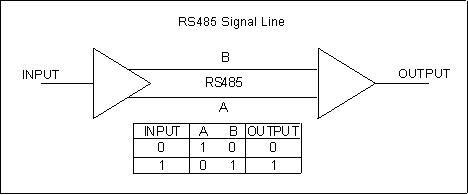In the world of industrial internet communication and networking, there are a lot of minute details that contribute towards giving us the convenience of information at our fingertips. From the type of computer network at the client end to the internet protocol to the databases being used, there are a lot of things that must come together in order to make a simple search request or process automation successful.
One such detail that plays a very important role in making exchange of information smooth and successful is the Modbus protocol along with the RS485.
These are two different but related concepts that people are often confused with. So let’s see what they are in detail.
What is Modbus and Modbus RS485?
 Simply put, Modbus is basically a protocol that facilitates communication between the “master” or the host and the “slaves” or the connected devices. It enables the host to read the measures and aids in the configuration of devices.
Simply put, Modbus is basically a protocol that facilitates communication between the “master” or the host and the “slaves” or the connected devices. It enables the host to read the measures and aids in the configuration of devices.
On a basic level, the Modbus protocol facilitates communication with the help of messages that equate to simple operations necessary to read and write regular 16 bit words and binary details or registers called “coils”. The host or the master usually initiates the exchange and the slave or the device usually replies.
Hence, as is evident, the Modbus protocol literally defines the messaging structure used in the exchange of data between the host and the slaves or the devices.
It must not be confused with a medium of communication though. It forms the messaging structure alone and is not the physical medium of data exchange.
Now, in a normal stream of industrial data exchange or communication during process automation, there usually is a master which most often is a Building Automation System or a BAS, a communications gateway device, and a PLC or a software program that is running on a computer.
In order for the data exchange to happen, the host requires a medium that not only facilitates the exchange but also determines the pace.
Enter RS485.
It is basically an electrical or serial transmission standard that defines the physical level of electrical signals between the host and the slaves and also the wiring that enables the transfer of data. It is a popular standard used in data exchange as it allows the usage of several devices using the same standard on the same bus, which eliminates the need to multiply interfaces on the host while querying multiple devices.
 Hence, when we say Modbus RS485, it denotes the protocol being used in process automation along with its ability to communicate effectively by the name of serial transmission standard.
Hence, when we say Modbus RS485, it denotes the protocol being used in process automation along with its ability to communicate effectively by the name of serial transmission standard.
On a normal case, a single multi-drop RS485 serial bus can facilitate up to 127 slave devices, which again is a good reason for its popularity.
Is Modbus the same as RS485?
The answer is no, because both of these are relative concepts that need each other in order to fulfil their purposes. Modbus defines the protocol type and RS485 defines the signal level on the protocol.
